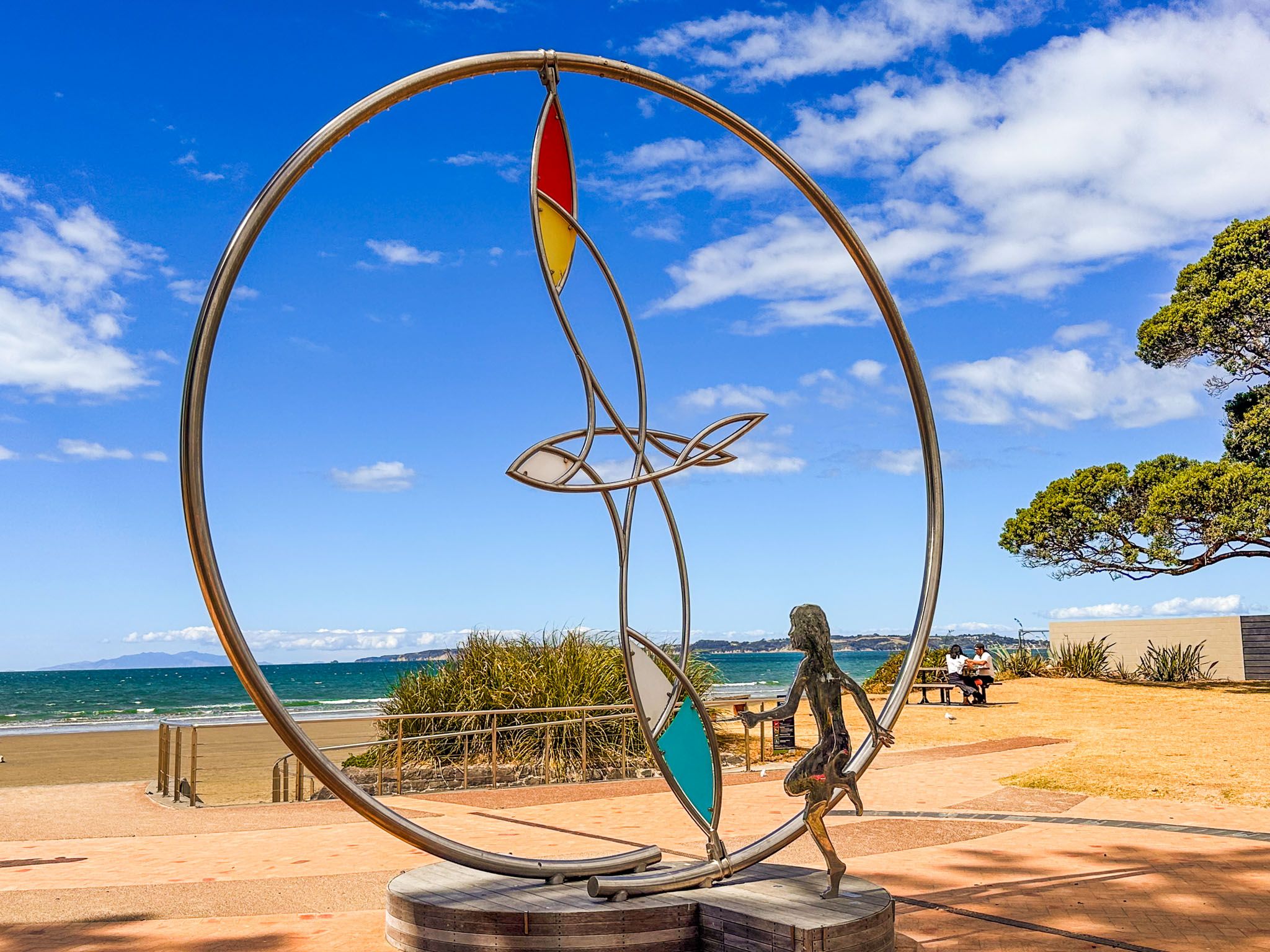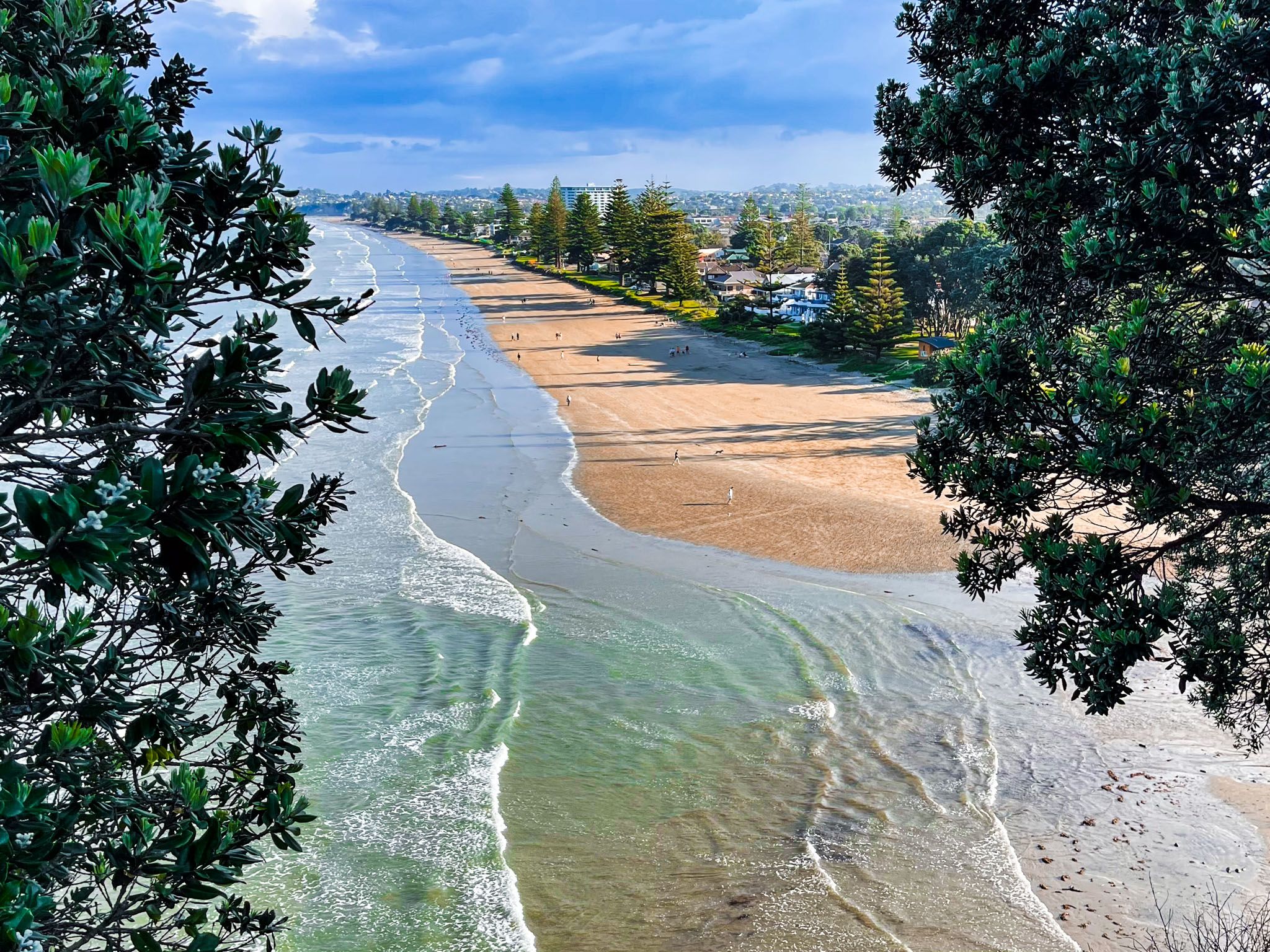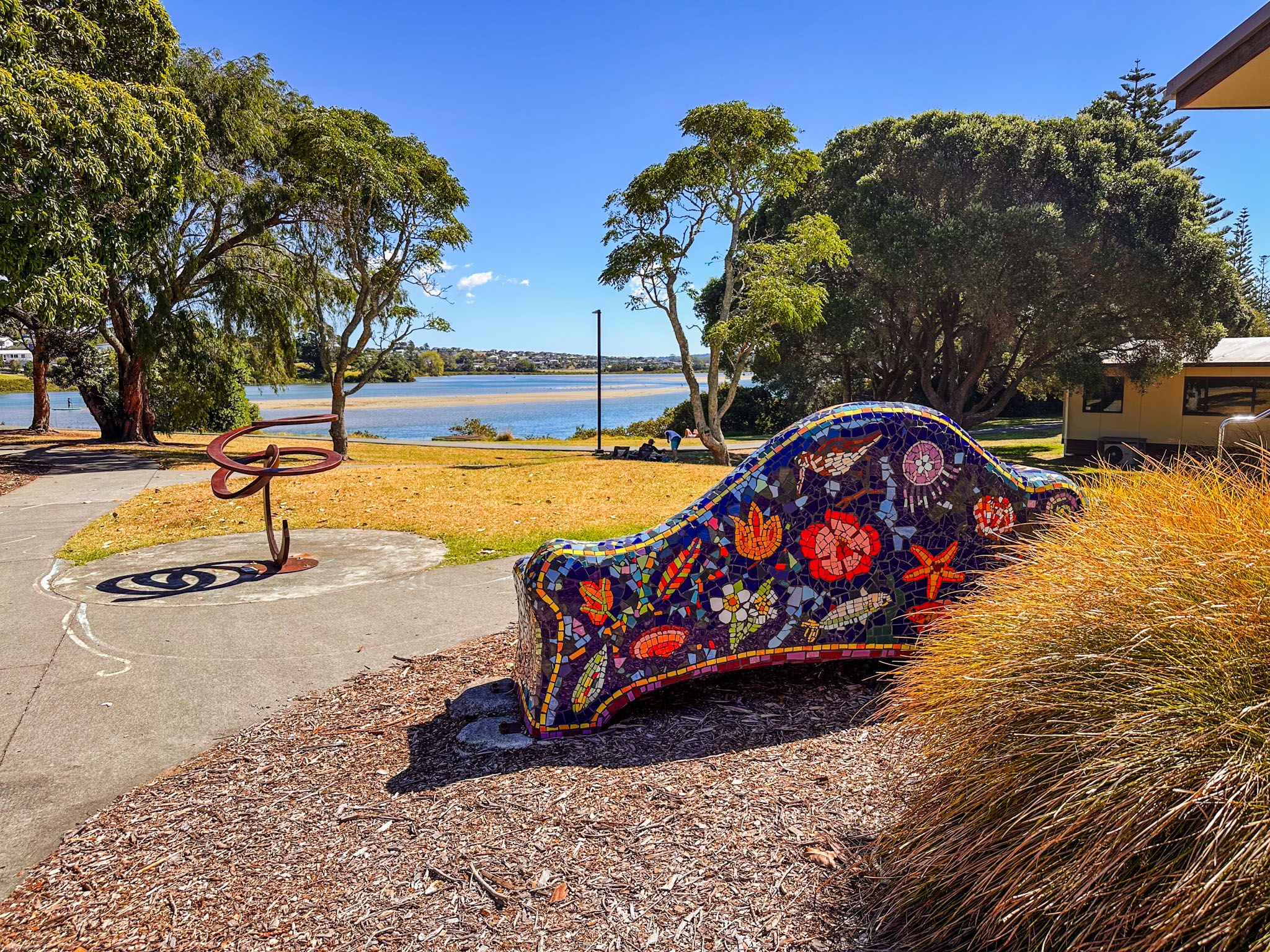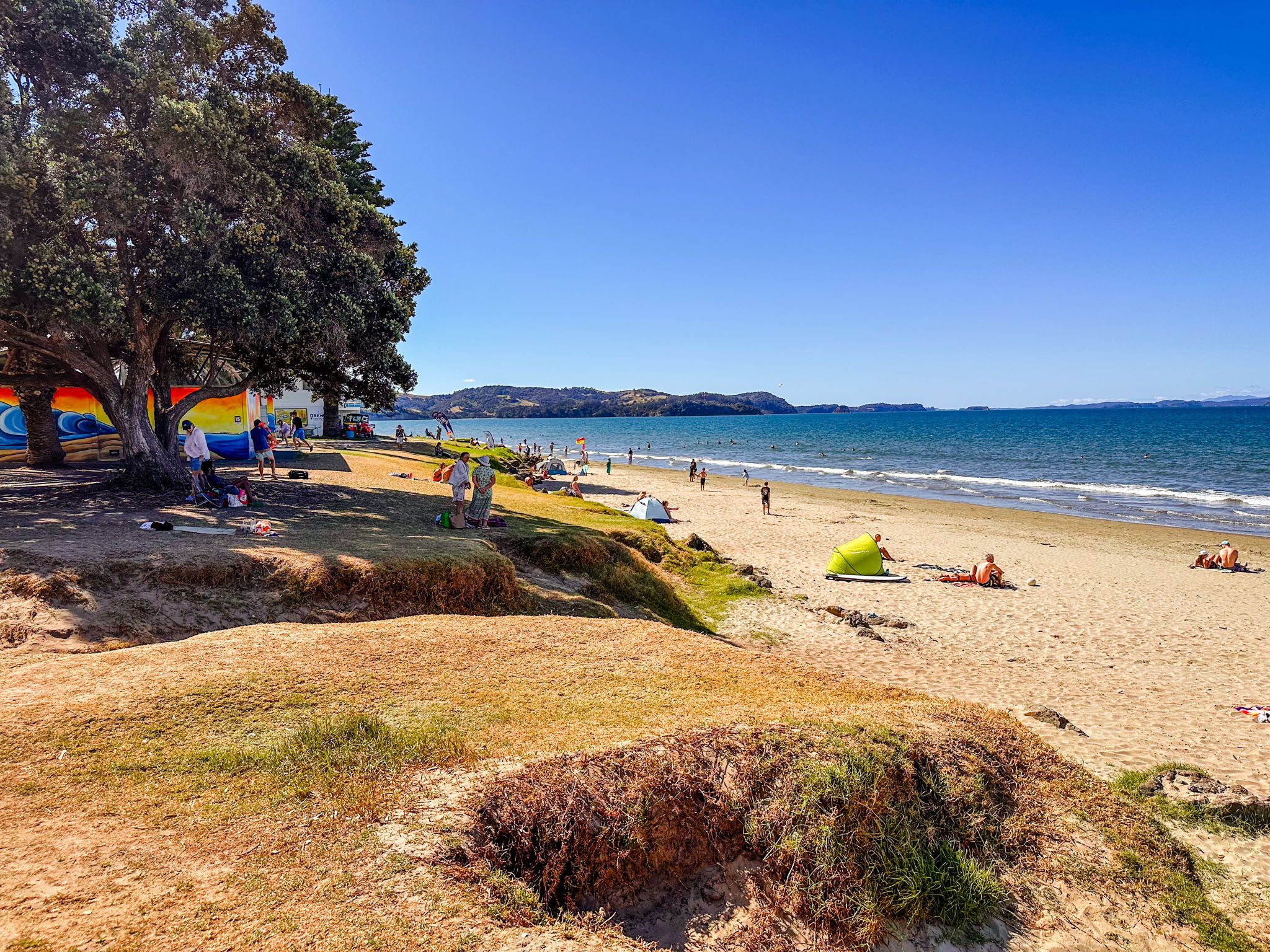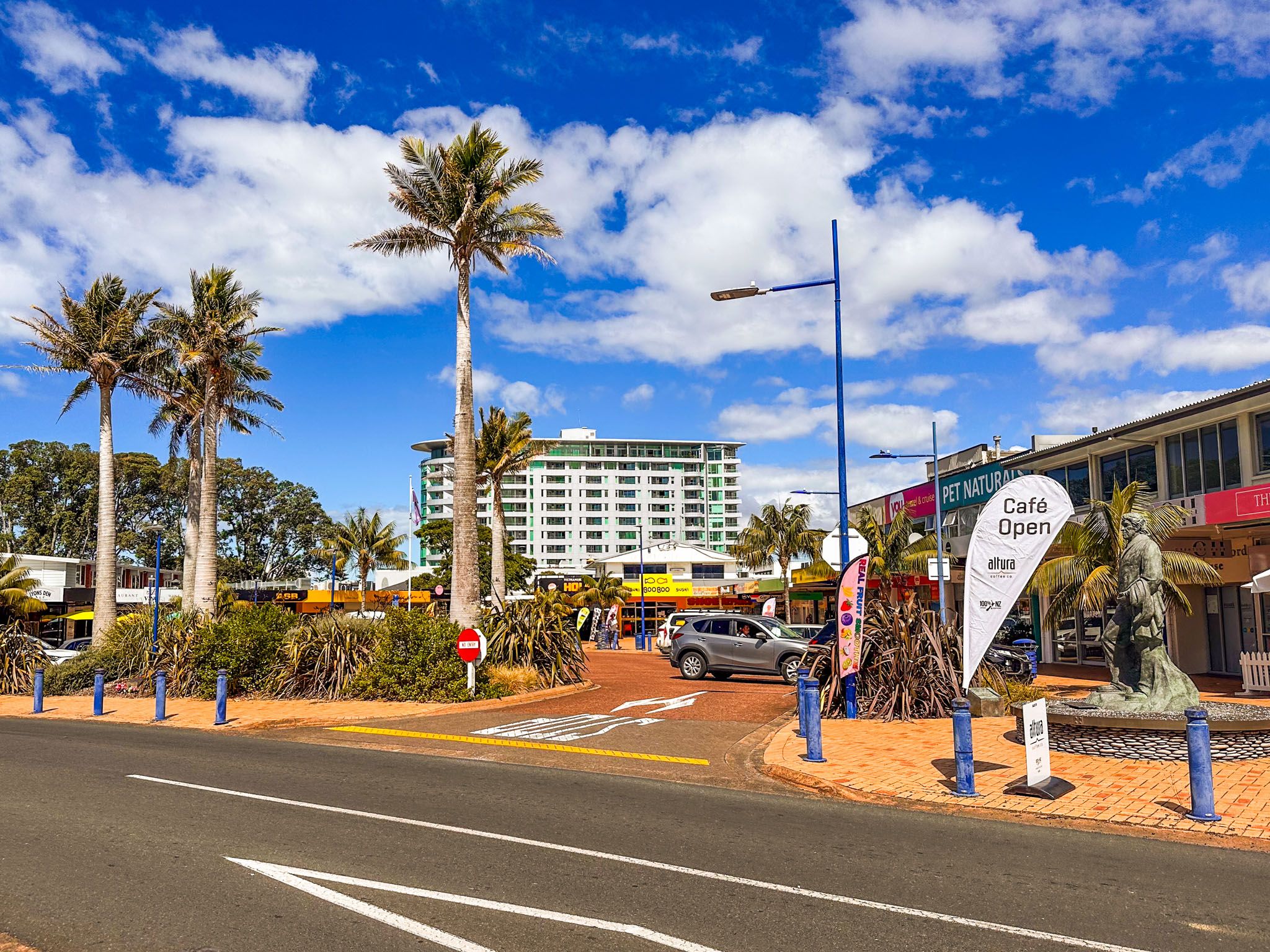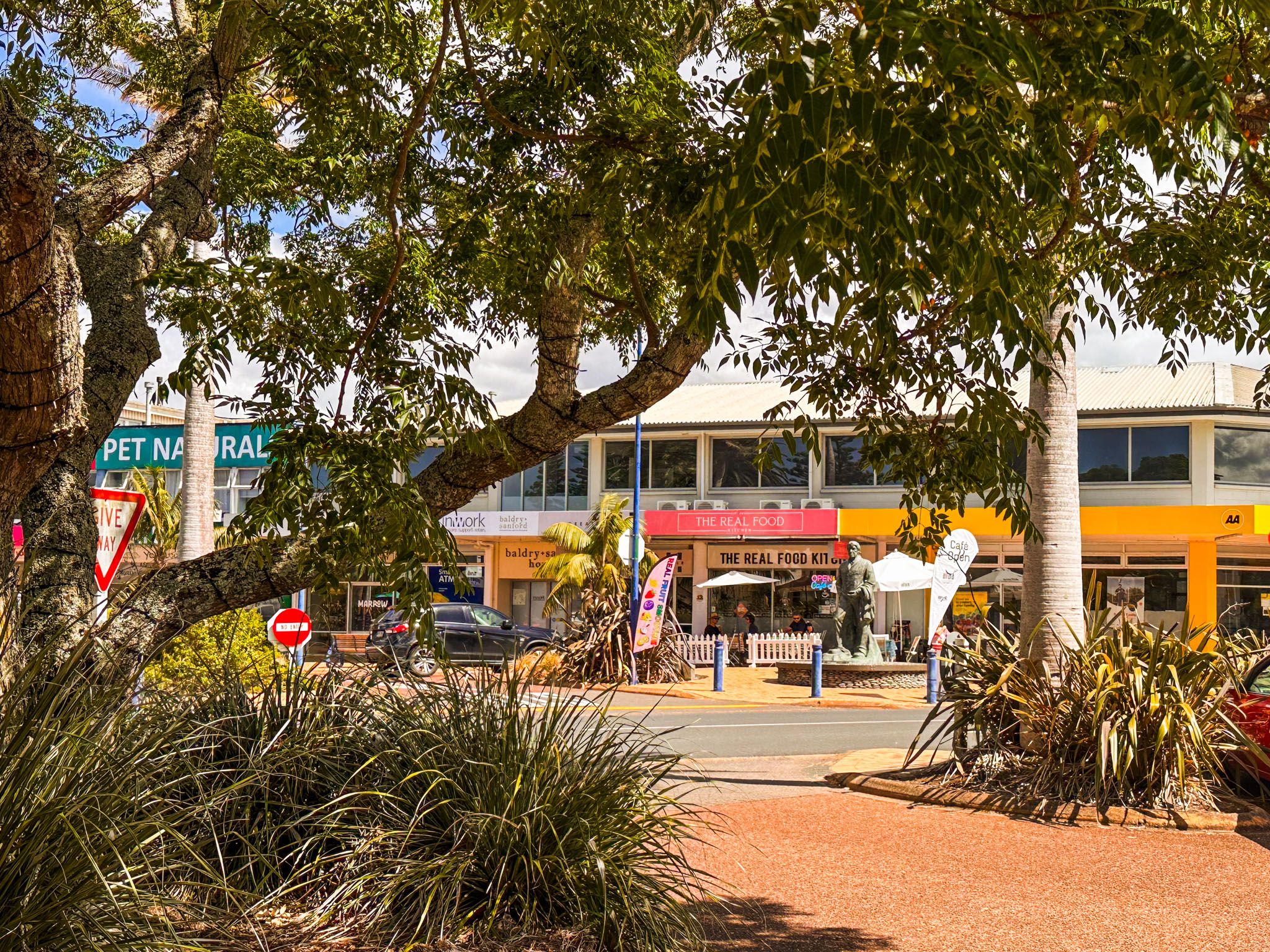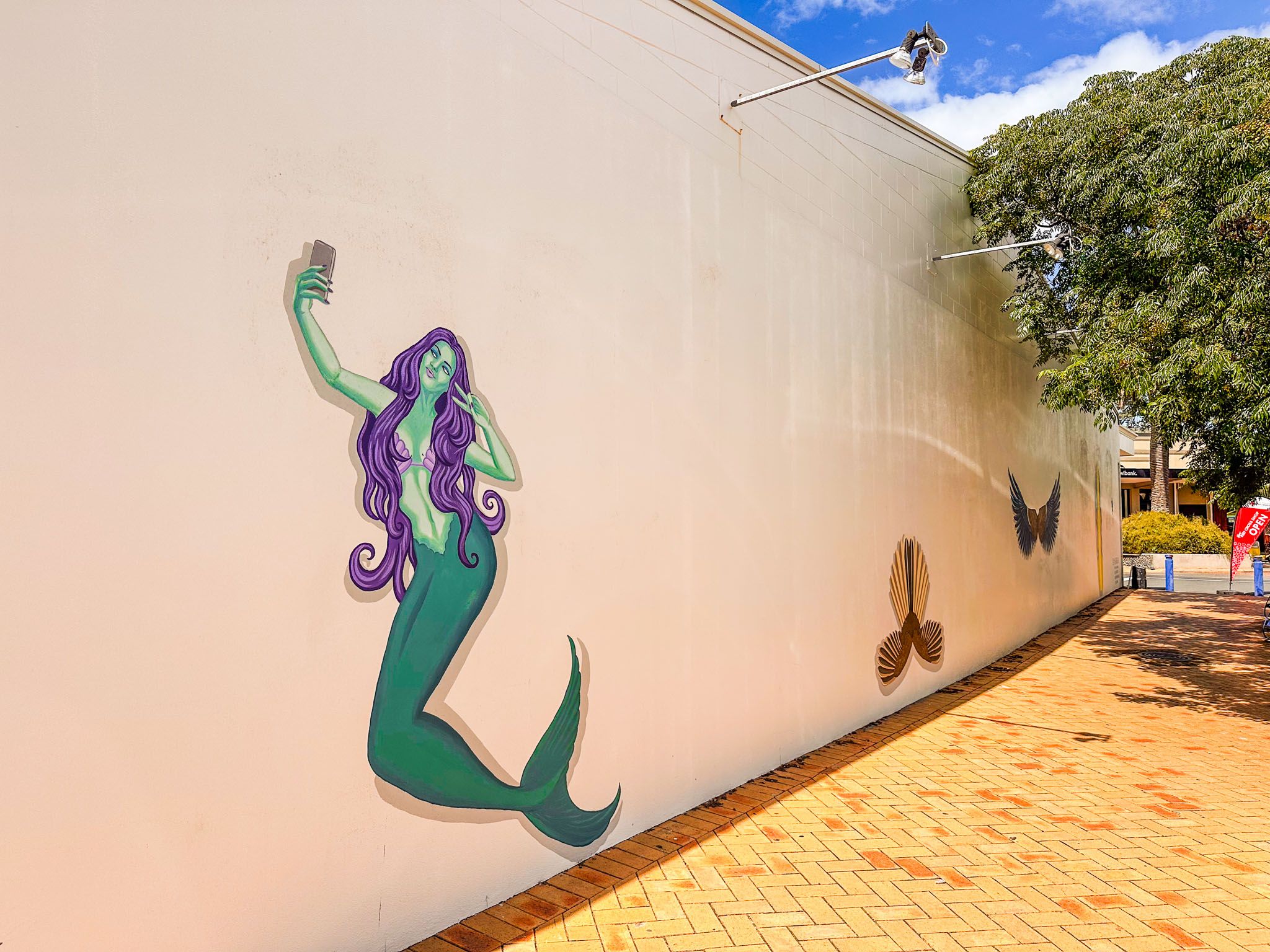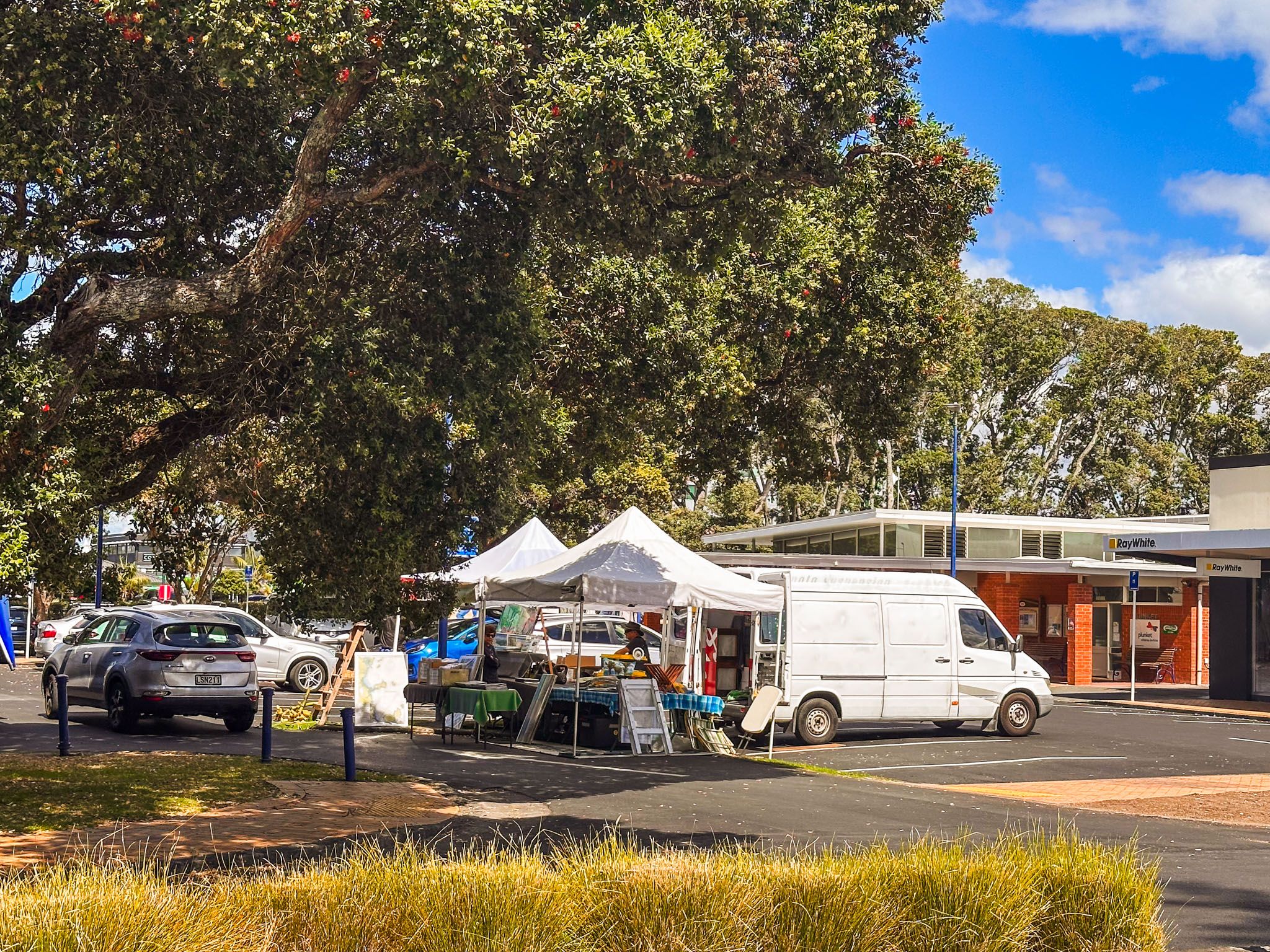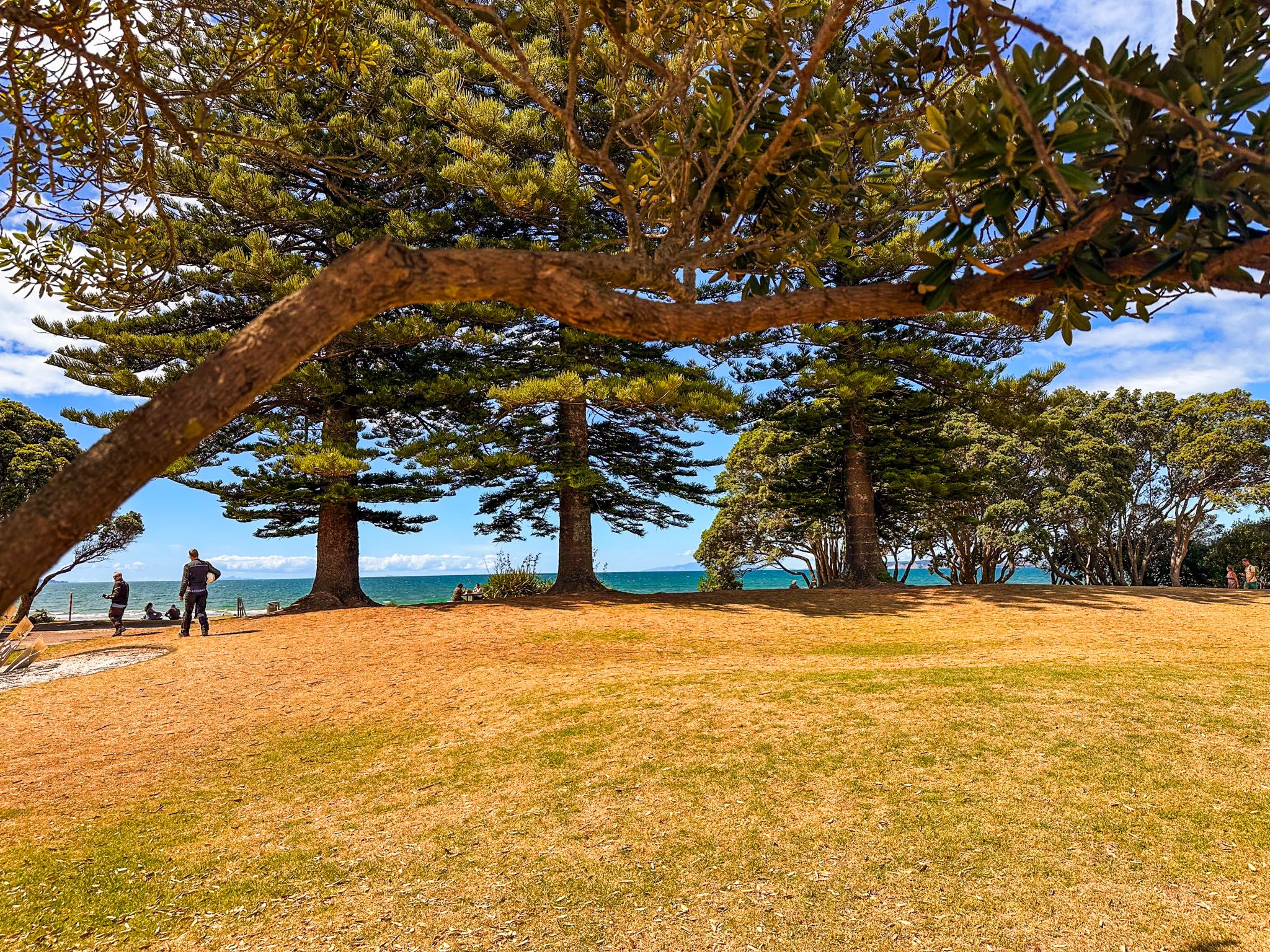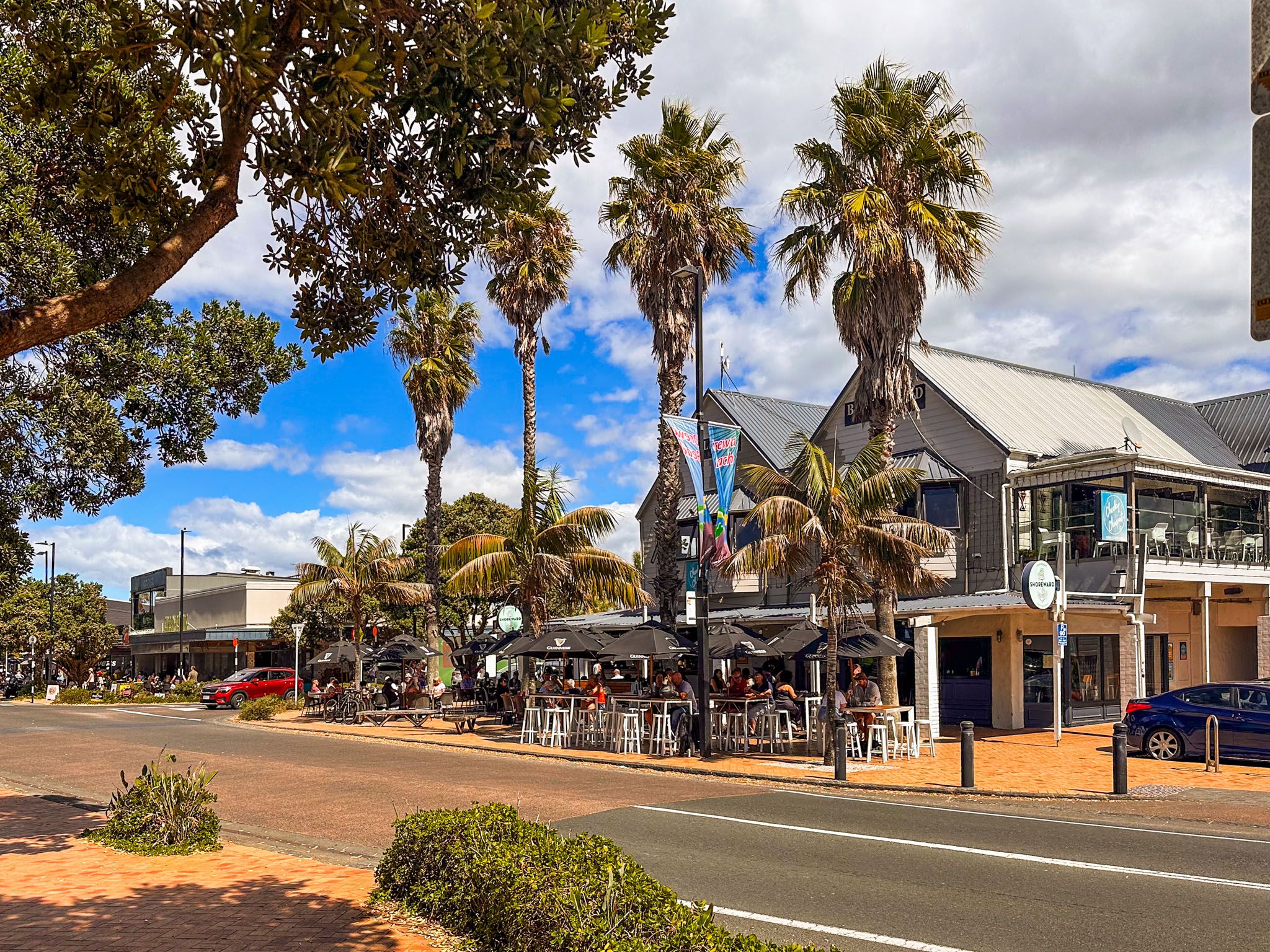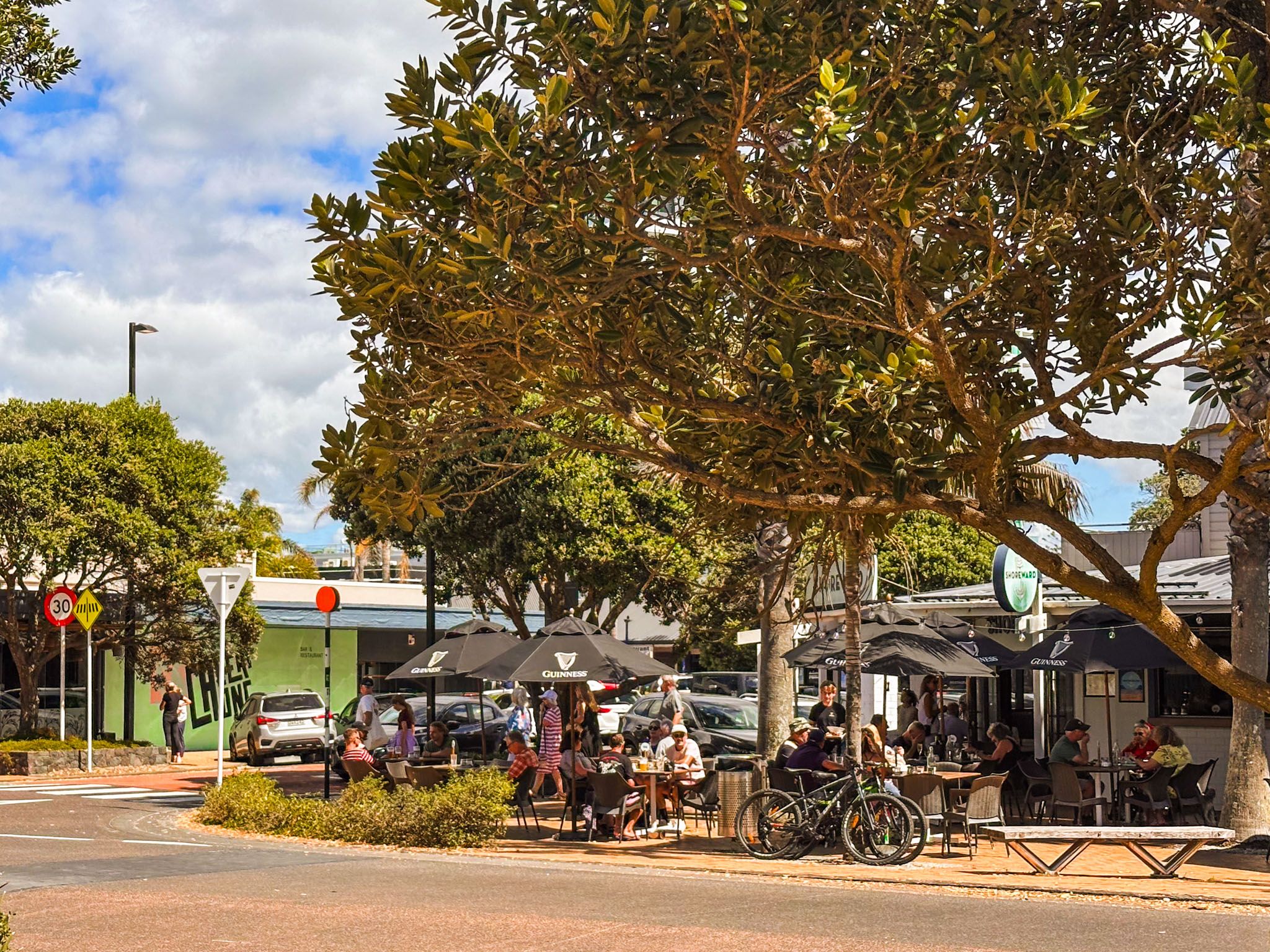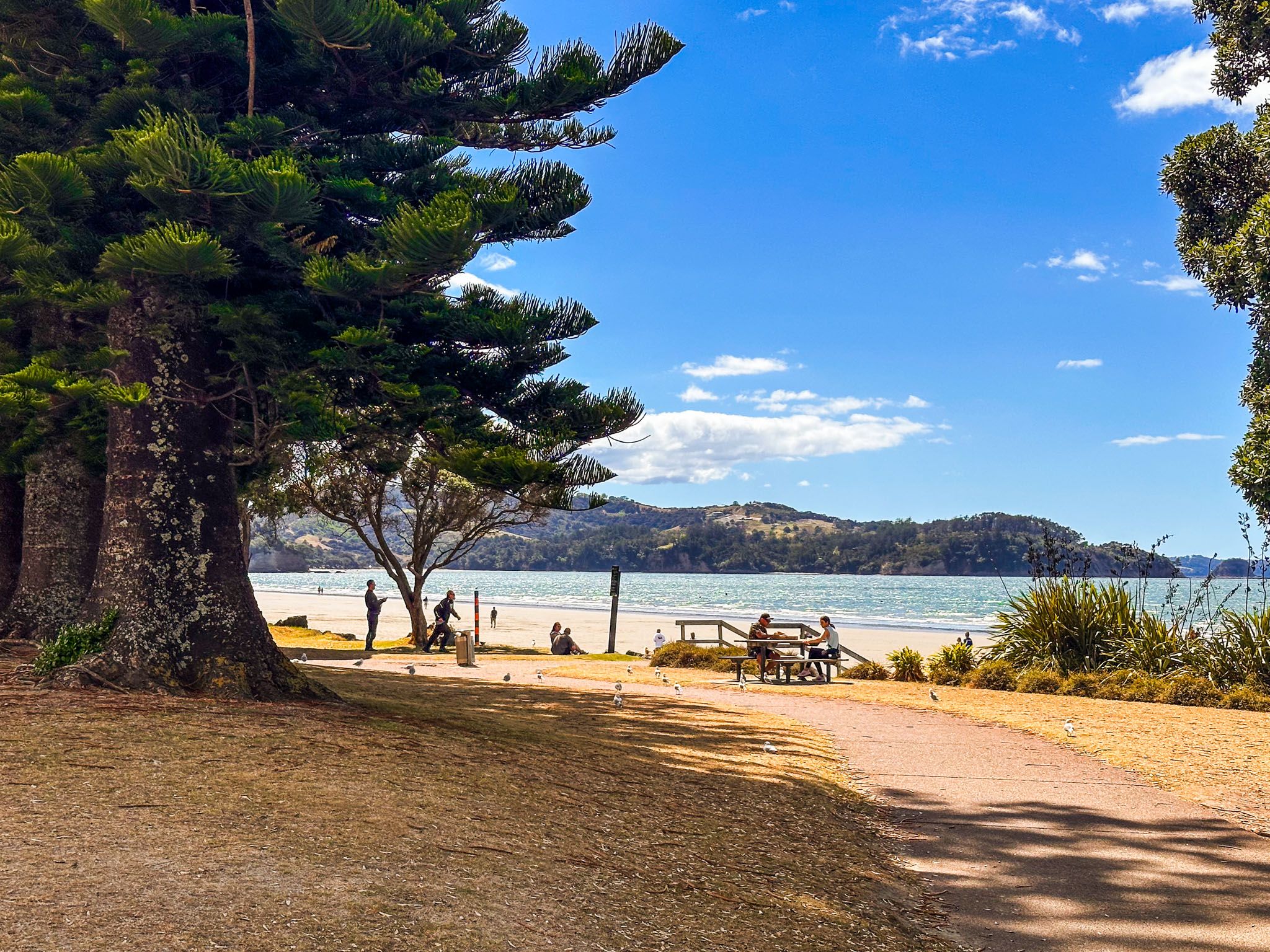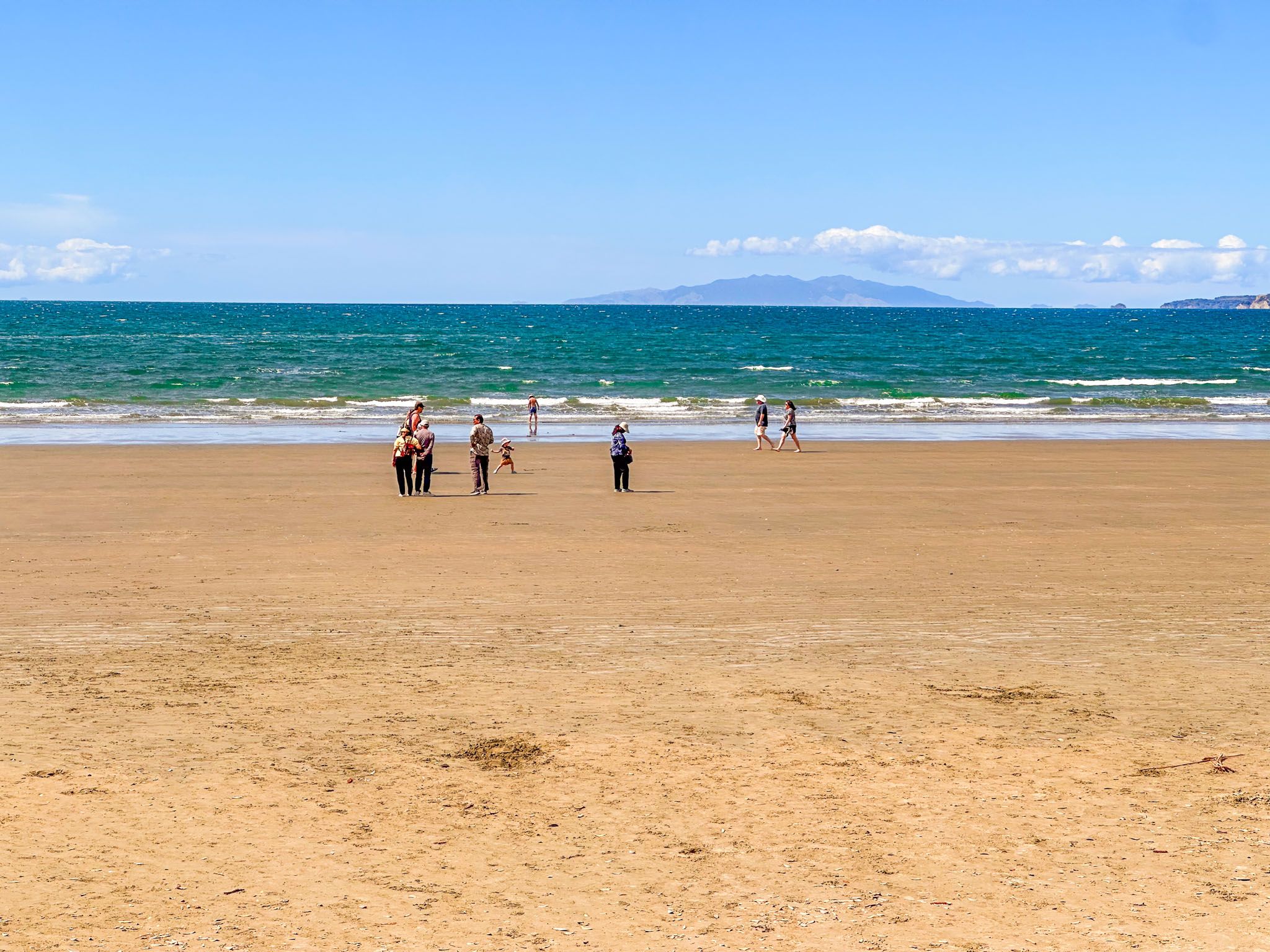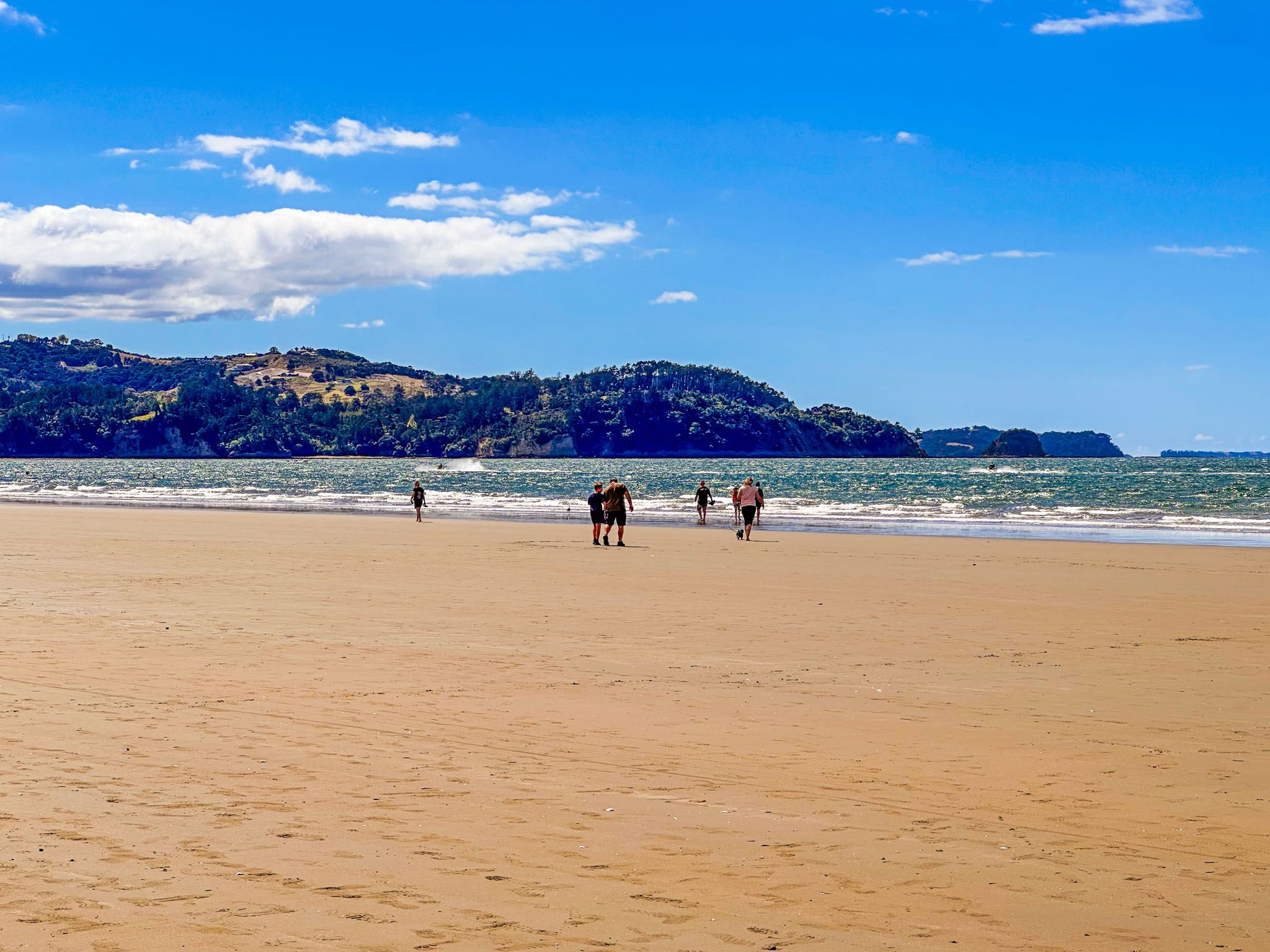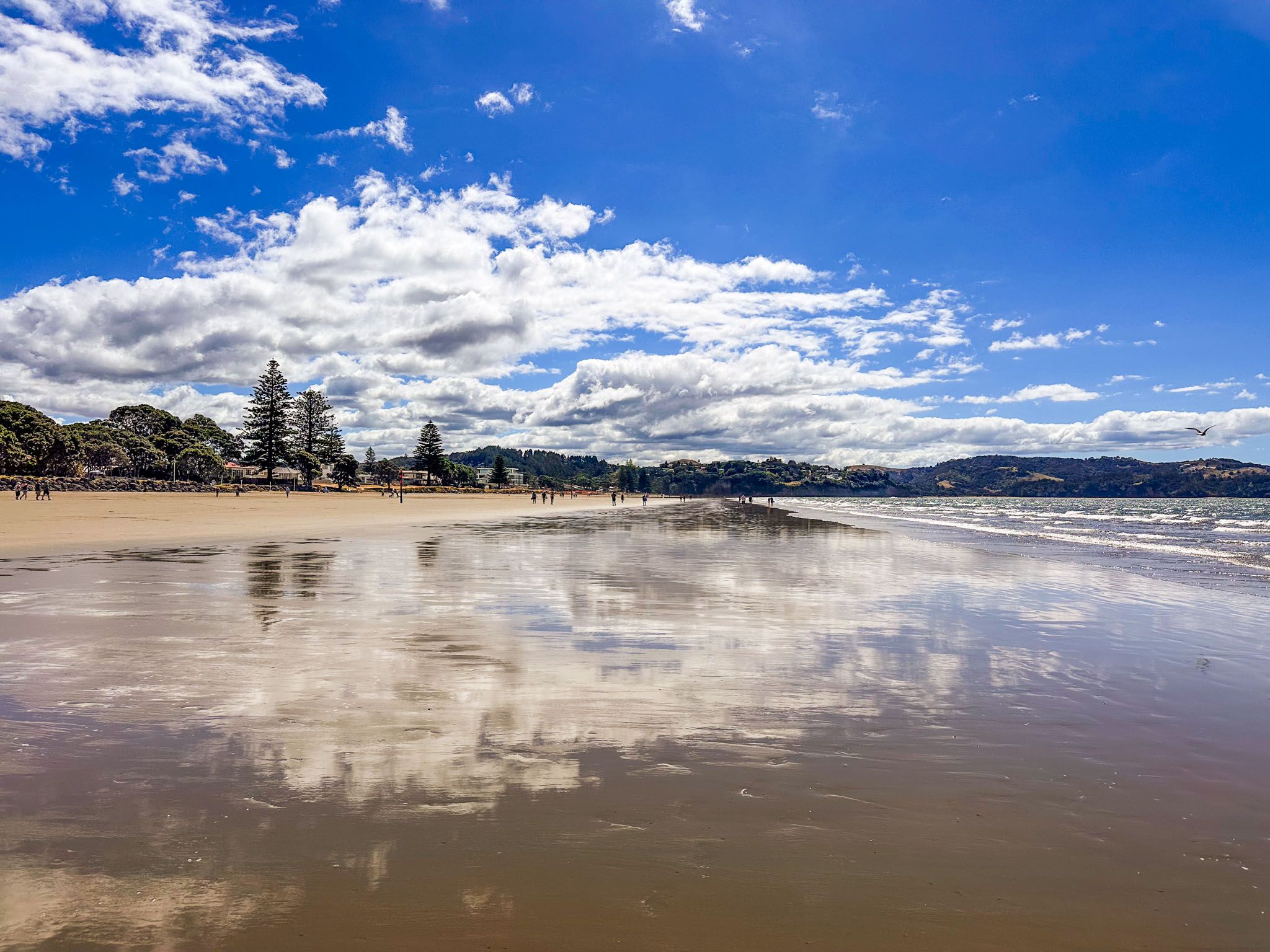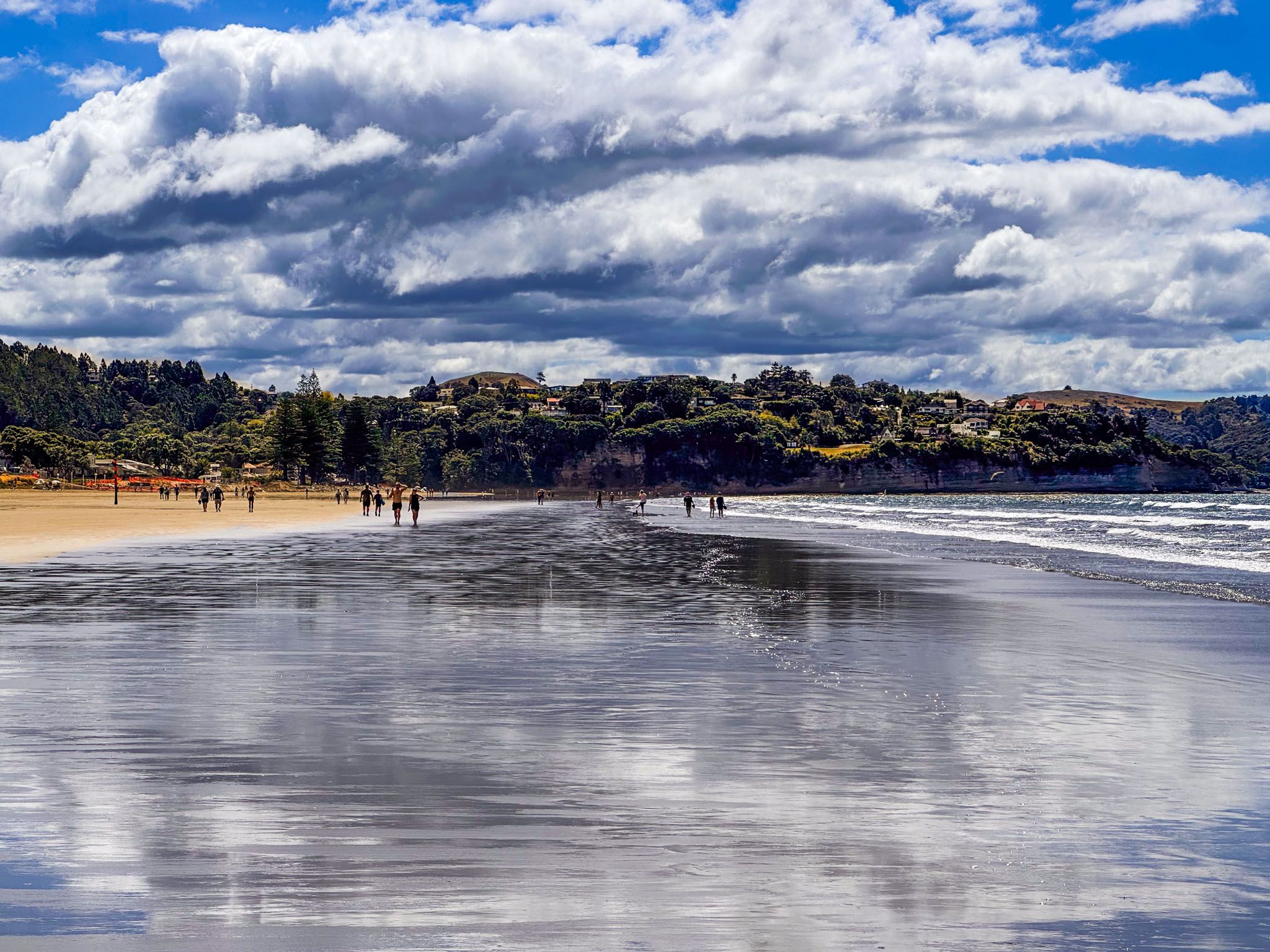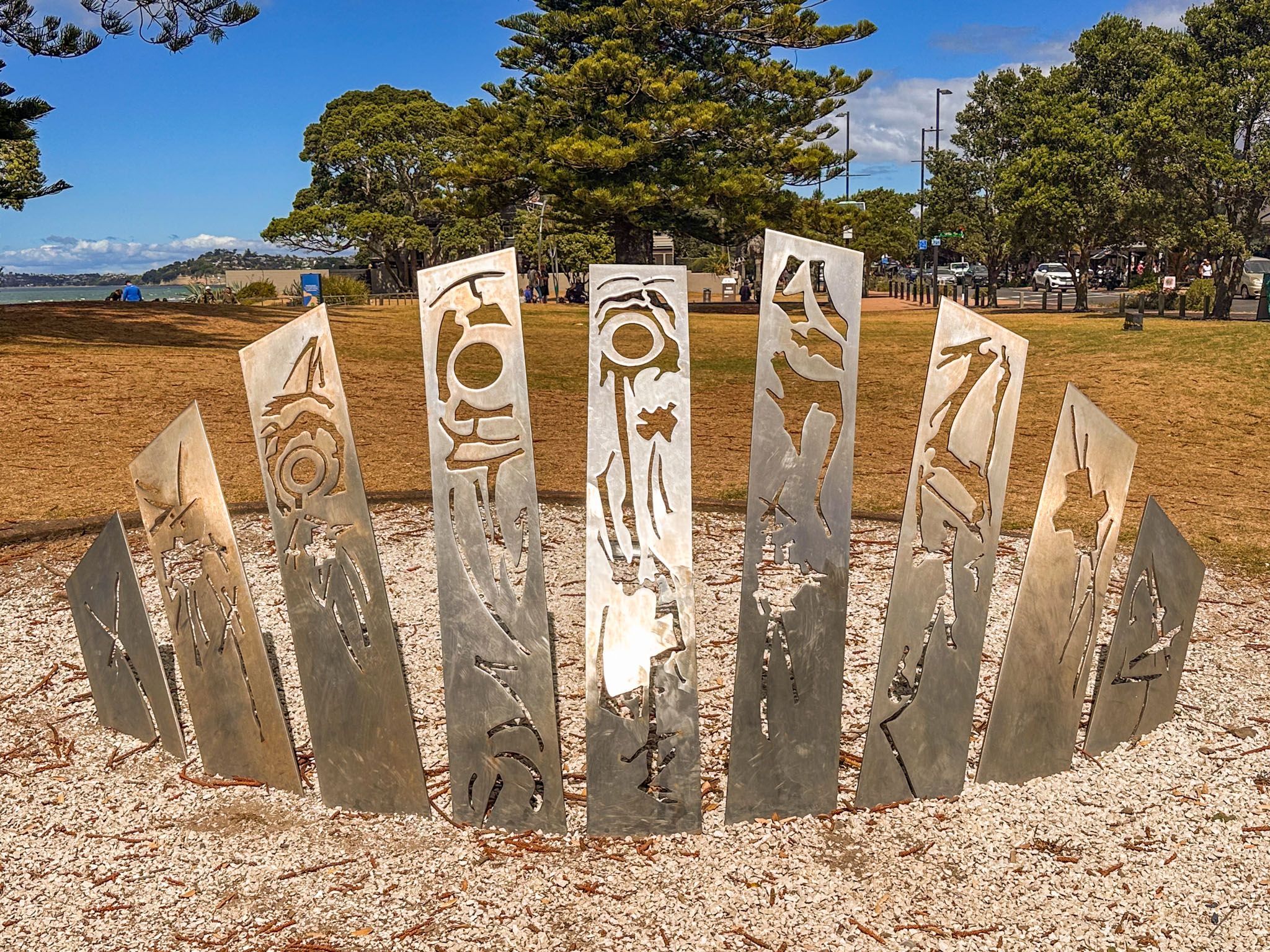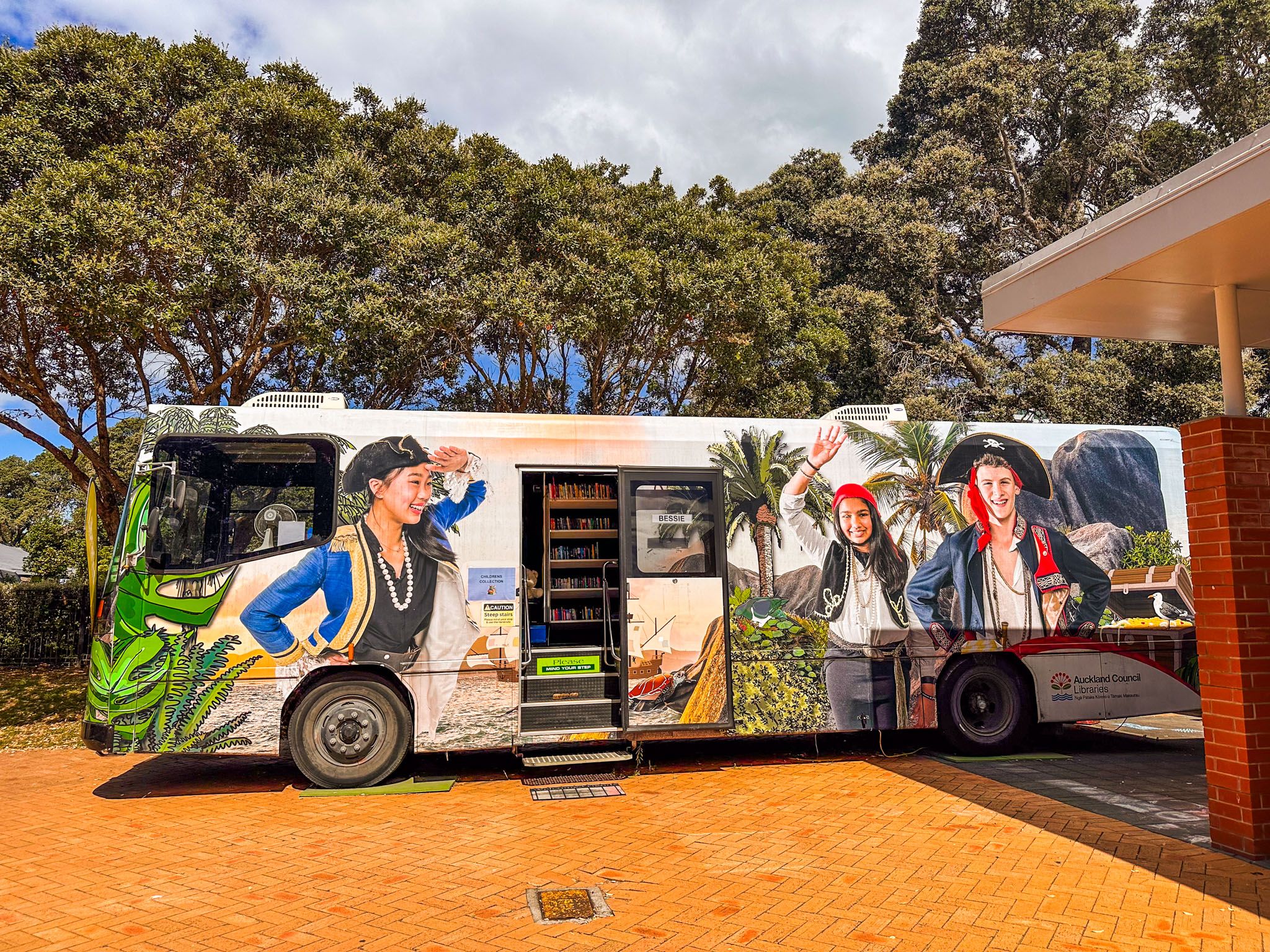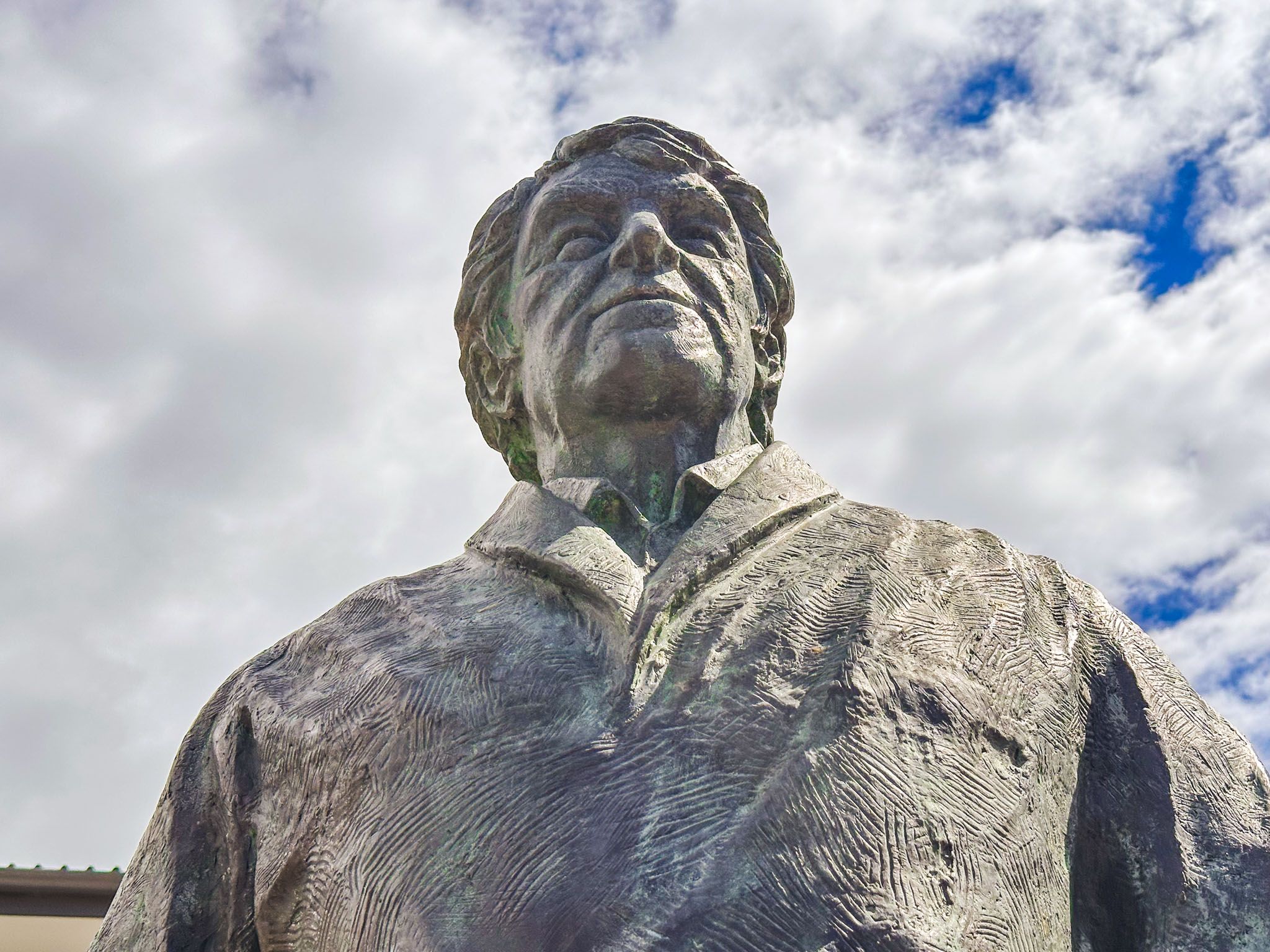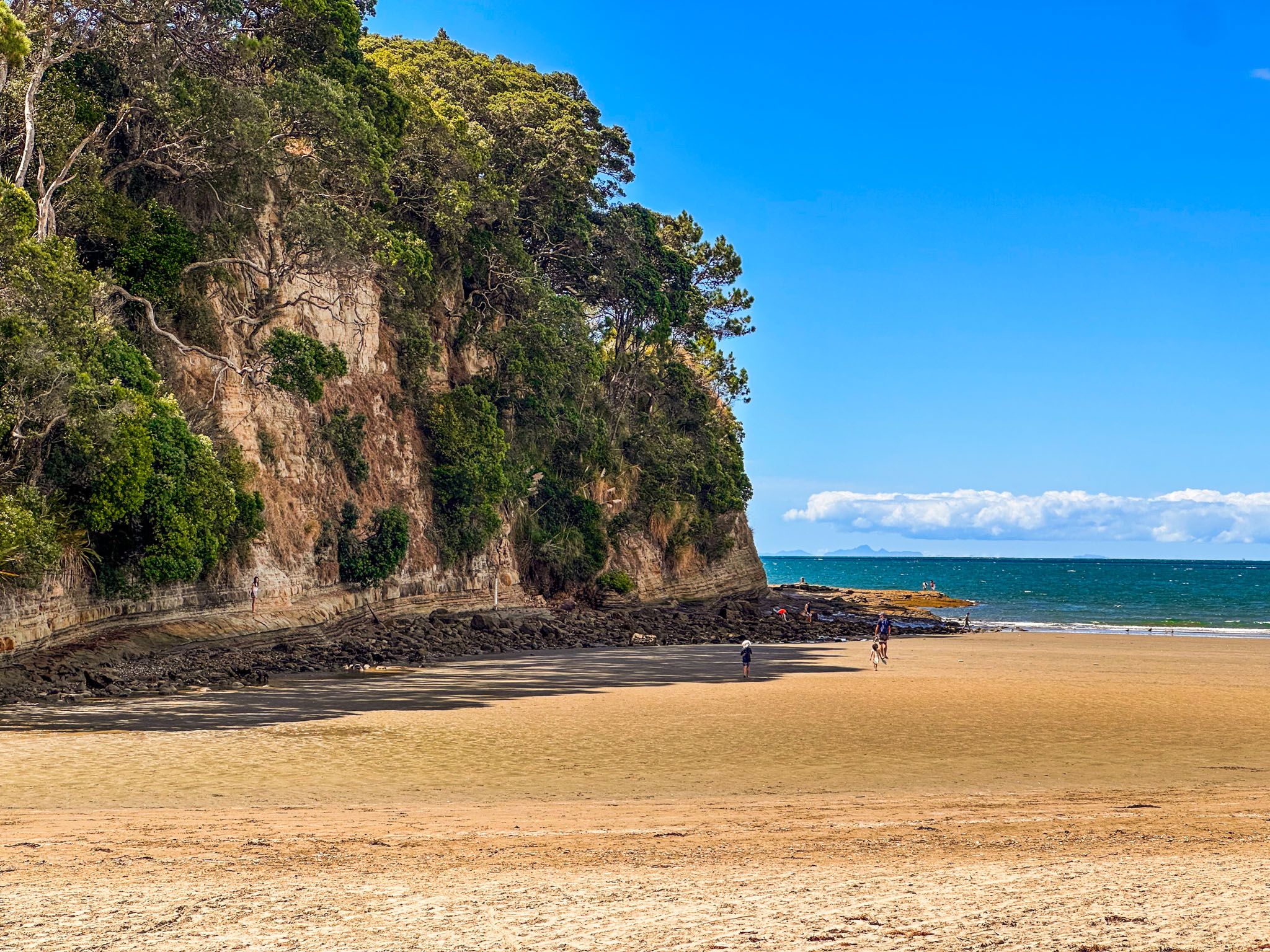Ōrewa is a substantial coastal town and suburb of Auckland at the southern end of Whangaparāoa Bay, where the Ōrewa River meets the sea. Its 3 km long beach, which is also a section of Te Araroa, runs along the eastern edge of town, making it one of the longest on the Hauraki Gulf and a favourite with swimmers, walkers, and surfers. The southern end of the beach borders the Ōrewa River estuary, while the northern end reaches the Alice Eaves Scenic Reserve and the Nukumea Stream.
To the north lies Hatfields Beach, separated by a cliff-bound headland. A clifftop viewpoint accessed on the Twin Coast Discovery Highway offers sweeping views of the entire bay and coast. Southward lies Red Beach and the Whangaparāoa Peninsula.
Although it is today a modern and fast-growing beach suburb of Auckland, it has a fascinating past. The area has been occupied since the 1200s/1300s by Tāmaki Māori. The area between the Ōrewa and Mahurangi Rivers was traditionally known as Mahurangi. The Ōrewa estuary, rich in seafood and with easy access inland, became a hub of activity with archaeological evidence of dense settlement. A portage route known as Aotoetoe linked the Ōrewa River to the Kaukapakapa River and Kaipara Harbour, allowing waka to cross between coasts.
The name Ōrewa likely comes from Te Wai-o-Rewa, meaning the Waters of Rewa and referring to a Kawerau rangatira. In the 1600s, Maki migrated from Kāwhia, unifying Tāmaki Māori and establishing Te Kawerau ā Maki iwi. His son Maraeariki settled near the Ōrewa River, and his descendants, including the hapu Ngāti Kahu and Ngāti Maraeariki, maintained close ties to the area with land and fishery rights throughout the Hibiscus Coast. Today, the small island near the mouth of the Ōrewa River, Te Motu-o-Marae Ariki, is named for Maraeariki (also known as Crocodile Island).
In the 1700s, Ngāti Pāoa from the Marutūāhu Confederation also fished in the bay, leading to periods of conflict and the sharing of rights, especially in relation to the highly prized shark fishery in the bay. Known pā sites in Ōrewa include Nukuhau Pā at the northern end and Ōrewa South Bridge Pā at the estuary mouth.
In 1821, a Ngāpuhi taua (war-party) attacked the area during the Musket Wars. Many survivors fled south, returning in the 1830s to re-establish seasonal settlements. European logging and kauri gum digging also began around the 1830s, particularly near the Weiti River. In the early 1840s, the NZ government improperly acquired Ōrewa as part of the enormous Mahurangi Purchase.
Although compensation in the 1850s restored substantial areas around Mahurangi and Tawharanui to local hapū, the area around Ōrewa was retained and sold off to European settlers. A cottage named Ōrewa House was built near the north end of the beach next to the Nukumea Stream. It was owned by Issac Cooper in the 1860s and the de Jersey Grut family from 1868, then by Alice and Edward Eaves in the 1900s. The name Orewa stuck as the town eventually developed south along the beach. The scenic reserve adjacent to modern-day Ōrewa House, Alice Eaves Scenic Reserve, preserves a patch of mature kauri, including the Hollow Kauri, estimated to be 800 years old.
Ōrewa developed into a popular holiday destination during the 1920s and began expanding rapidly in the 1950s and 60s after the opening of the Auckland Harbour Bridge. The town centre took shape around Hillary Square, named after Sir Edmund Hillary, with a celebratory statue.
Ōrewa’s long flat beach is ideal for swimming, paddleboarding, and beach walks. The Twin Coast Discovery Highway separates the beach reserve from the town centre, where cafes, restaurants and stores line the road. Check out Airborne, the gorgeous outdoor statue in the main entrance to the beach opposite the town centre by Philipp Ripa and John Mulholland. Public beach access and parking are readily available, although it’s often busy on sunny weekends and intense during NZ summer holidays.
From Downtown Auckland, take the Northern Motorway to the Silverdale off-ramp, then continue 15 minutes along the Twin Coast Discovery Highway. For quicker access, exit at Grand Drive and drive directly into the town centre.
